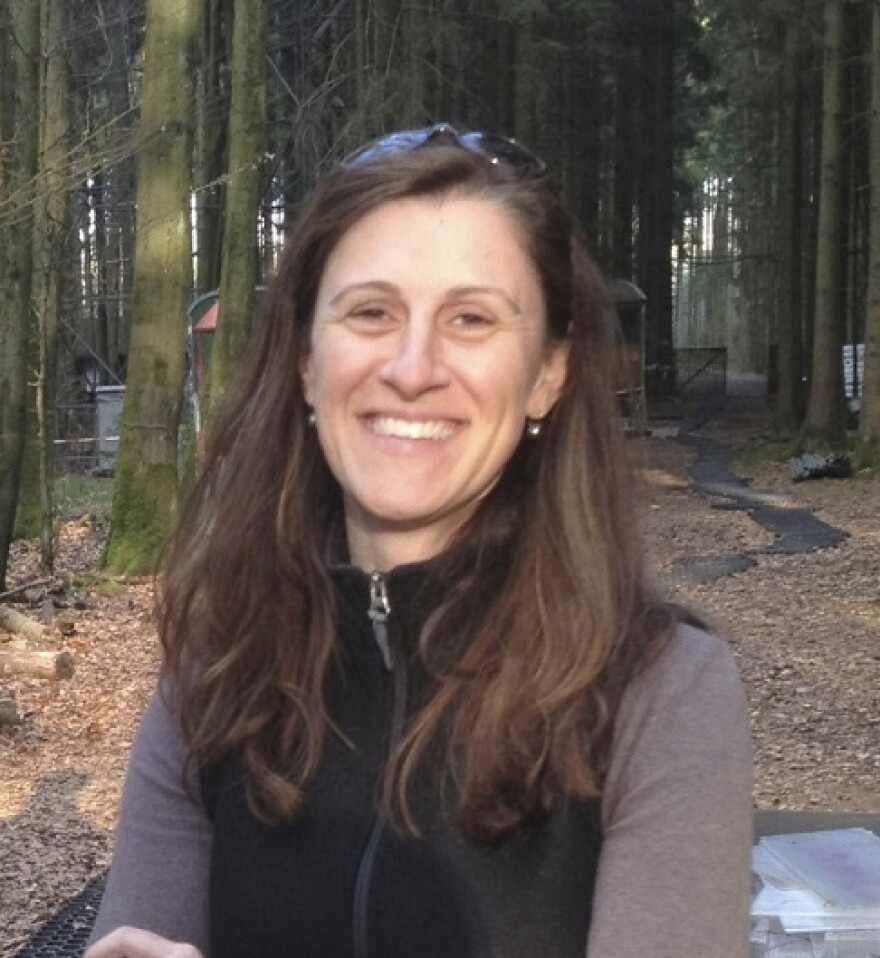(NCPR) - The leaves are starting to change color across New York. But this year, the fall foliage may come sooner and be less vibrant because of drought conditions around the state.
Emily Russell spoke with Taryn Bauerle, a plant biologist at Cornell University, about this year’s fall foliage and how climate change could impact the future of leaf peeping in New York.
TARYN BAUERLE: Around [the Ithaca] region, as well as near the city and Long Island, and I think also more of the western part of the state, have been experiencing a moderate drought. So even though we have received some rainfall locally, and more recently, I don't think it's really been enough to alleviate all of the drought that we've accumulated over the summer months.
EMILY RUSSELL: What does that mean for timing and type of fall foliage we could see this fall?
BAUERLE: Usually, that means that the timing will be a little bit earlier. The plants are under a little bit more stress and so they tend to start to change their leaves a little earlier, and then end a little earlier as well. So they don't tend to hold on to those leaves quite as long. If it's a more extreme drought event, then we might have a very reduced resilience to the colors. So the leaves tend, as you can imagine, get more brown and shrivel up before they even are able to reach those nice colors.
RUSSELL: Have you seen a shift in timing in recent years or decades, because of something like climate change?
BAUERLE: for New York, for sure we are experiencing some changes to our climate. I wouldn't say there's any dramatic or extreme change, particularly from a year-to-year basis. When we're looking over long-term trends, it might be the case that we find some shifts there. But I haven't really seen that for New York, or like I said, at least anything that we would really notice very much. It might be on the order of just a few days or so here or there. But it's definitely a possibility moving into the future. For example, New York doesn't really have a history of a lot of droughts, but they seem to be kind of creeping along. And if that's the case, we might see more shifts going into the future.
RUSSELL: What is actually happening inside of a tree or inside of a leaf that actually makes it change color change into like a bright, yellow or orange or red?
BAUERLE: What's basically happening is that the green color of leaves— so the chlorophyll that we visually see— is breaking down and basically unmasking the other colors that are often present even during when the chlorophyll is there or sometimes produced later in the season. So we're able to see those colors before the leaves drop and that is because as the days become shorter and the nights cooler, the plants— at least deciduous trees in this case— stop making the chlorophyll since it's a very energy-intense process. And they're shutting off those leaves from the main stem up the tree before it drops.
RUSSELL: Are you into leaf peeping?
BAUERLE: Somewhat, yeah I mean I enjoy it. Of course it's so beautiful.
RUSSELL: Do you have a favorite place you like to go or a favorite way to go and see the leaves change?
BAUERLE: Well, I've worked a lot in our local forests here [in Ithaca]. Mount Pleasant is one that's not very far from us. It's often one that, in the fall, we're out there taking samples, and it's on a little raised knoll, so it tends to be a bit cooler temperatures than Ithaca and it's a really nice place to see the fall foliage. But I'm also a hiker, so anybody grab me and I'm happy to go anywhere in New York if I have the opportunity.
RUSSELL: As someone who studies plants and droughts, what's top of your mind when it comes to fall foliage?
BAUERLE: Really the biggest question, which I have to admit I don't have a great answer for, is that what's going to happen in the future? And it's a big question out there as we're experiencing these very different seasons and more erratic seasons, I would say. And so that's the big question mark. I have to put a lot more thought into that, but it's something that I think people should be cognizant of and thinking more about because these trees only have so many mechanisms at their disposal to deal with our changing climate. We want to preserve them not only for their beauty and everything for us, but also for all of the ecosystem services they give us as well.
2022 Copyright North Country Public Radio.



